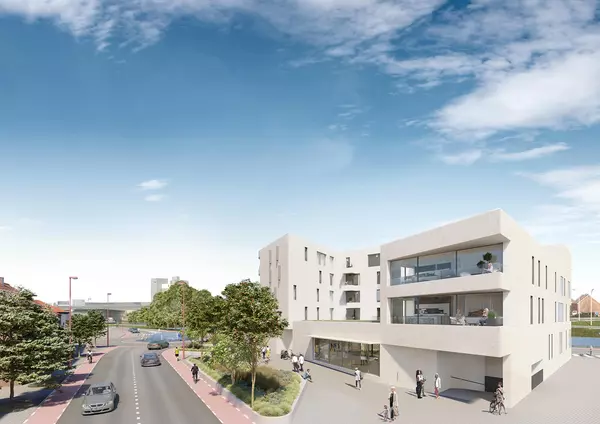The answer is clear: We are not rezoning enough homes (Guest Commentary)
Over the past five years, we’ve focused heavily on rising home prices and the growing shortage of attainable housing in Richmond. But that raises critical questions: At this point, how are we doing as a region? Are we rezoning enough residential lots to construct homes, and how many people will our efforts actually serve? Are we pricing a sizable part of the Richmond population out of the market?
From 2017 to 2024, the combined total of rezoned residential units for new homes – single-family, townhome and condo products – in Chesterfield, Goochland, Hanover, Henrico and New Kent counties accounted for just 65% of the capacity needed to match issued building permits. Rezoning activity peaked in 2021 and 2022 but has since declined. In 2024, these localities again rezoned only 65% of what would be required to meet permit capacity. In other words, demand for new homes is outpacing the supply coming through the rezoning pipeline – worsening the familiar imbalance between supply and demand.
In recent years, Richmond has been permitting between 3,500 and 4,000 new homes per year. Per Zonda, a housing market data and analytics company, the region has 16 months of vacant developed lot inventory, meaning if no further residential rezonings take place, in less than two years, developable land will be fully built out.
As of June 30, a total of 1,543 units have been approved through rezonings in the counties mentioned. That is inclusive of for-rent multifamily developments. The for-sale segment – which includes condos, townhomes and single-family homes – accounts for just 437 new units. Based on the latest U.S. Census estimates, that’s 0.49 new homes per 1,000 people in the existing population.
The Weldon Cooper Center estimates annual net population gains of 11,000 to 14,000 residents, which equates to 30 to 40 people per day.
Let’s consider a scenario of new homes relative to population growth. Say the same localities conservatively grow by a combined population of 10,000 in 2025. Not considering the existing housing deficit, to house four people per home would require 2,500 new homes. The region needs to zone residential homes accordingly to support brain gain – the entry of skilled or educated populations to our region.
Not accounting for future brain gain, what is that existing deficit? As of June 18, 2025, MarketNsight, a housing market data analyzer, reports an annualized deficit, combining new homes and resale, in the counties of Chesterfield, Goochland, Hanover, Henrico and New Kent of 10,956.
The average price of a new construction home in the region as of Q1 2025 is $519,572. Let’s consider what level of income is needed to qualify for a home at that price.
Assuming a 10% down payment and existing monthly debts totaling $875 ($500 car payment, $200 in credit cards, $175 in student loans), the total monthly debt including a mortgage would be about $4,595.
To stay within a 50% debt-to-income ratio, which is typically the maximum allowed to qualify for a mortgage, a household would need to earn $9,190 per month, or $110,280 annually in gross income.
However, according to data from the 2025 Mayoral Transition, the median household income in the Richmond MSA is $81,388. Sixty percent of households in the region earn less than $100,000 annually. This means that at least 60% of households are effectively priced out of purchasing the average new construction home in the region.
Rent growth is highest in areas where new housing construction has lagged. In our region, vacancy rates are consistently below 5%, a tight market.
 The answer is no; we are not rezoning enough homes. Every county in the region is operating at an annualized deficit of new and resale homes, perpetuating deterioration of housing attainability and disproportionately affecting first-time buyers, renters and low- to middle-income families. Despite some earnest efforts to expand workforce housing, the region’s overall housing viability continues to decline because Richmond continues to underbuild.
The answer is no; we are not rezoning enough homes. Every county in the region is operating at an annualized deficit of new and resale homes, perpetuating deterioration of housing attainability and disproportionately affecting first-time buyers, renters and low- to middle-income families. Despite some earnest efforts to expand workforce housing, the region’s overall housing viability continues to decline because Richmond continues to underbuild.
The consequences of rezoning challenges extend beyond market-rate homes. Nationally, Habitat for Humanity ranks among the top 20 homebuilders by volume, constructing thousands of homes each year. However, local production depends heavily on factors such as volunteer availability, funding and – most critically – access to land. In 2024, Richmond Habitat for Humanity had the land opportunity to complete just six homes. Habitat for Humanity provides an invaluable service by offering affordable homes to families and individuals. It is very unfortunate that the lack of available land zoned for residential construction is the barrier that prevents the organization from serving more people.
Business leaders: Are your hiring managers reporting recruitment issues due to a lack of attainable housing near your job location? Are housing prices creating challenges for your employees to perform their jobs to the best of their ability? Let’s ask the tough questions and engage employers and employees in the process of residential rezonings. All employees are constituents and can easily weigh in by emailing their planning commissioner and supervisor. We are halfway through 2025, and grassroots support can create a compelling impact on rezoning approvals.
The post The answer is clear: We are not rezoning enough homes (Guest Commentary) appeared first on Richmond BizSense.
Recent Posts
GET MORE INFORMATION

Agent | License ID: 0225209440








